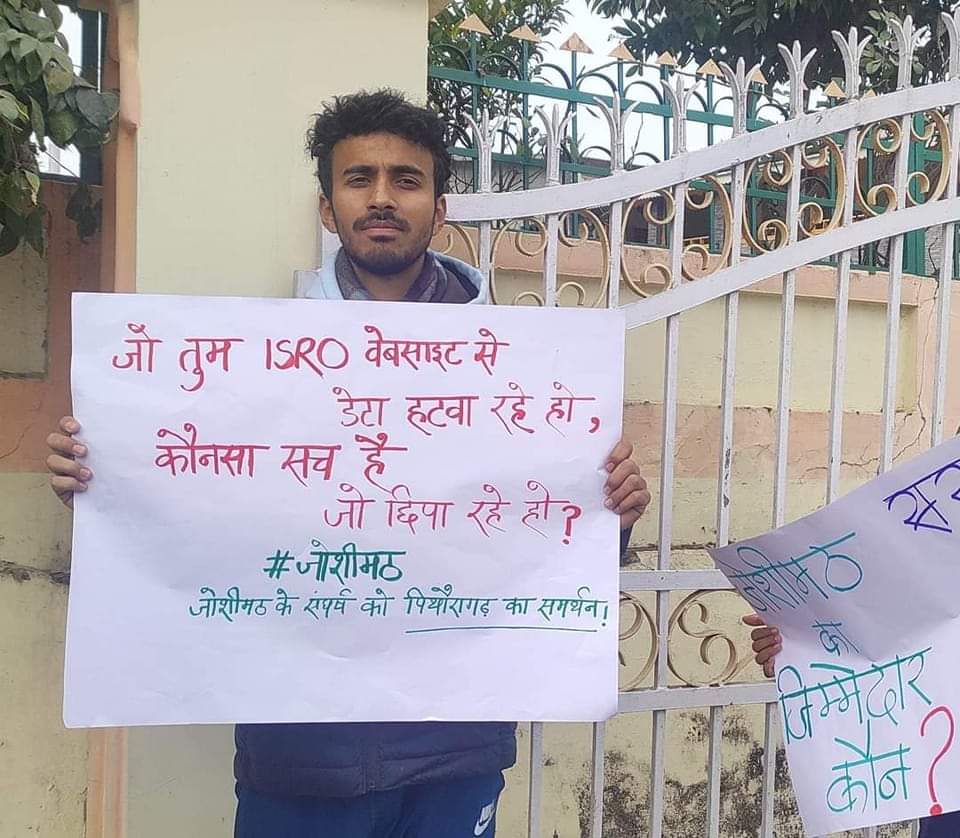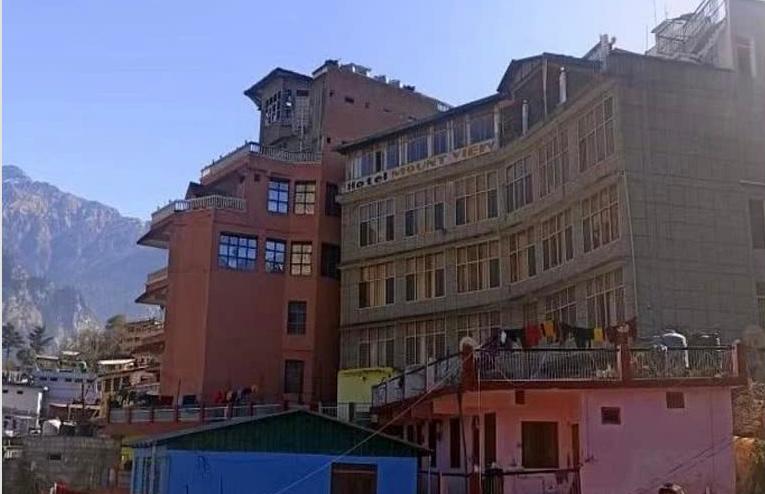This is the second of a two part story looking at the soil subsidence incident in Joshimath and all the warnings that were ignored leaving residents fearful of what the future holds for them
A little known fact is that the soil subsidence vulnerability of Joshimath has has been known for over 35 years. In 1976, the then undivided Uttar Pradesh government ordered formation of a 18-member committee headed by Garhwal Commissioner M C Mishra following the devastating floods of 1970.
The committee report emphasised that Joshimath is situated on a moraine of a landslide and prone to landslips and landslides. The committee also recommended that there should not be any interference with the slopes and trees should not be cut. The committee had also recommended building scientific drainage system for the town.
But every recommendation and continuous warnings from scientists, scientific institutions, numerous committees and reports of putting in place safeguards against soil subsidence happening slowly in many parts of the state, have been ignored.
Instead, the state is seeing unbridled human activity in the shape of construction of hydro-electric projects with rampant use of explosives for digging tunnels, the Char Dham all-weather road and Rishikesh-Karanprayag railway line and indiscriminate felling of trees on hills that has exacerbated the already fragile ecological condition in many regions.
The dissenting scientist
We spoke to Dr Ravi Chopra, a leading environmentalist who headed the Supreme Court appointed monitoring committee on widening of ‘Char Dham’ Road but later resigned due to his objections on damage to ecology from road widening being ignored.
Dr Chopra recently returned from Joshimath and recommended many urgent steps the state needs to take. The first and foremost being that all large infrastructural projects involving Joshimath and contiguous slopes be abandoned. He further said that the reports of the various scientific investigations ordered by the state must be shared with the local people and used to prepare a rehabilitation response in consultation with the local people.
“The reports must be used to delineate the safe and unsafe areas,” emphasised Dr Chopra. “Then it can decide which structures have to be demolished and which families have to be moved and where to, in accordance with the rehabilitation plan”.
The third priority, says Dr Chopra, is to begin slope protection measures in the different wards of the town based on scientific studies. These will include activities like dewatering, building slope protection walls, protection of the toes along the Dhauliganga and the Alaknanda rivers and revegetating parts of the town with trees, bushes, and grass.
“The priority right now should be to ensure the safety of the local people,” says Dr Chopra. “The matter of immediate financial assistance to all the families must be reviewed and settled quickly. The Joshimath Bachao Sangharsh Samiti has proposed an advance payment of Rs 5 lakh per family which can be deducted in the future from the family’s final financial package. Many families will be able to use that sum to temporarily rehabilitate/resettle themselves thus reducing the immediate resettlement /rehabilitation logistical burden on the state”.
“The damage is irreversible hence there is need now for comprehensive strategy to check urbanisation and unplanned growth in a seismically active zone,” said Dr S P Sati, a geologist with Hemwati Nandan Bahuguna Garhwal University. Dr Sati conducted a study on the situation in Joshimath on the demand of the residents in 2021 along with two other fellow geologists.

Read more: Char Dham highway project will only add to urban woes
The committee’s 2022 report said that the geo-morphological and historical evidence point towards the fact that the slopes around Joshimath are inherently fragile. The committee, referring to the huge growth in urban population which is estimated to be around three lakh during summer tourist and pilgrim season, reiterated the concern shown by the Mishra committee report in 1976 regarding unregulated construction and disposal of waste.
Obviously, the state and centre have not learnt any lessons from these studies or the many past natural disasters in Uttarakhand like earthquakes, landslides, cloudbursts and flash floods.
In the heaviest deluge seen at Kedarnath in 2013, more than 5000 pilgrims and tourists lost their lives with unprecedented damage to infrastructure. In 2021, more than 300 people lost their lives in natural disasters.
Risks, far and wide
It is not only Joshimath which is facing possible disaster from any unusual weather event and the monsoon rains of this year. Other towns and villages are facing similar risks. The causes being entirely man made. For instance, many areas in the popular hill stations of Mussoorie and Nainital are facing land subsidence. More than 50 houses in Karanprayag, a town neighbouring Joshimath, have suffered damage, forcing people to abandon them.
Many villages in Rudraprayag, Pauri and Tehri districts have alleged that the 126 kilometer long Karanprayag-Rishikesh railway line, which comprises blasting through mountains to build a large number of tunnels; the blasting work for the ‘Char Dham’ All Weather road, which would run more than 800 kilometres in the Garhwal Himalayas, has led to cracks in their homes and soil subsidence.
In response, the state government had identified 465 villages for relocation till 2021. However, only 1100 families in 44 villages have been relocated so far.
The people of Joshimath allege that the construction of tunnels for the Vishnugad-Tapowan hydro-electric project of National Thermal Power Corporation (NTPC), has triggered the subsidence in the town which is denied by the NTPC authorities. The state government claimed that the water samples of Joshimath and NTPC tunnels do not match thereby claiming that land subsidence has nothing to do with the hydro-electric project.

The construction of hydro-electric projects in Uttarakhand has remained controversial with Supreme Court banning the construction of 44 such projects following the 2013 Kedarnath disaster. The Apex court had also constituted an expert committee to study the environmental impact of these projects in Bhagirathi and Alaknanda valleys which suffered in the Kedarnath deluge. The expert committee cleared 10 projects and banned just one.
Interestingly, apart from the ten projects mentioned in the first environmental committee report, the state government proposes to work on 10 other projects to enhance the hydro power potential as the state has to purchase power worth Rs 1000 crore annually.
Read more: ‘Mountain man’ Dr Anil Joshi: “There should be no aggressive development projects in the hills”
While, natural disasters have become the fate of the people of Uttarakhand in the shape of landslides, land subsidence, forest fires, floods, cloudbursts and earthquakes, there is no serious attempt to mitigate the situation. Uttarakhand Chief Minister Pushkar Singh Dhami, announced after the Joshimath incident that a scientific study to know about the carrying capacities of hills and towns of the state would be undertaken. He is, however, yet to announce any details of this exercise.
These disasters hitting Uttarakhand frequently has also led to migration from the hills to the towns and cities of the state. Urban population has increased from 25.66% in 2011 census to 30.23% in 2021.
A report of the Migration Commission set up by the previous BJP government indicated that 28.72% population left the state, 35.69% shifted from one district to another, 15.46% went to their district headquarters and 19.46% migrated to nearby towns from their rural hamlets. Which would make the scale of any natural disaster that hits Joshimath a far greater tragedy than any other in the past.
Note: The pictures used in the story were shared by Joshimath residents who did not want to be named because of the govt’s media gag order